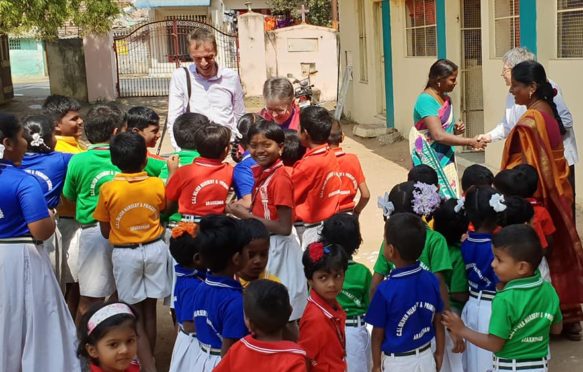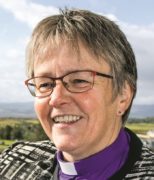They say that travel broadens a person’s horizons, so as I write this I am planning a trip to Portknockie.
I have just returned from a visit to India and Pakistan.
I have never been in that part of the world before and people who have told me that it would be a bit of a culture shock.
The colours, sounds, sights, smells and tastes they said, would be an assault on all my senses.
And my sooth-saying advice givers were right.
These countries, in different ways, are completely unlike anywhere I have been before and virtually every minute in them is an experience.
Take the traffic.
The sheer volume is hard for those of us, used even to the busiest roads in Scotland, to comprehend.
As well as the usual cars, vans, trucks and buses, there are more tuk-tuks, rickshaws, bicycles, tractors, horses, bullocks, donkeys pulling carts and motorbikes than you could ever count.
And what seems like no highway code at all.
Everyone jostles for position, horns continually blare and at junctions, road users come at you from all angles, so that it becomes a case of who dares makes the first move.
But then you need to throw into the mix the stray dogs roaming the streets, even in the cities, and the goats and cows that wander where they will.
I saw one cow skilfully swipe a naan bread from a stall with her tongue.
Pedestrians have to take their life in their own hands whenever they step off what passes for a pavement.
Technically, India and Pakistan are like us and drive on the left but in India especially, that technicality is just that, a technicality, as cycles and motorbikes constantly drive up the wrong side of the road – even at night with no lights on.
On one particular occasion it was a bus that was headed straight for us.
Driving in India is not for the faint-hearted.
I have only one word for the food in these places, however, and that is ‘wonderful’.
To begin with, our hosts kept offering us bland versions of their dishes because they assumed that Scots don’t eat, or like, spices.
They soon discovered that we do and went for it.
Ten days in and we mastered the art of eating with our fingers – right hand only – and tearing bread one-handed. Not easy.
I was not there though to just to eat and sightsee.
I was meeting with the churches of North and South India and of Pakistan.
The welcome was humbling but even more humbling is the way that Christians in these places are coping with living where they are very much a minority with all the challenges, prejudices and difficulties that brings with it.
In both countries, Christians are at the bottom of the social pile, doing the most menial jobs, paid poorly and often finding it difficult to access any education or healthcare.
In certain areas they also face intimidation and threat.
In Pakistan, we had an armed guard travelling with us and each of the churches we visited had at least one posted at the gate.
The law in fact demands that they do.
In both countries it is also illegal for Christians to go out in search of converts – the consequences are severe.
But does all of that mean that the churches are dwindling? No, the opposite is true.
So, how come?
In India, the churches have the most amazing projects in the cities’ slums and poorest districts, aimed at educating and training women and children especially.
They have even created a mobile training unit that goes out to the villages.
Through self-help groups that organise themselves, under supervision, into credit unions, people are given what they need to set up small businesses.
Sewing things, for example, from shirts to the most beautiful costumes for brides and grooms, opening up hairdressing units, or small shops and one young man has become a photographer.
These people were so keen to let us see what they had achieved through just the tiniest investment of time, concern and resources.
These opportunities which the church’s projects offer, alongside the schools all three churches run, are open to everyone – Hindu, Muslim Sikh as well as Christian.
They dare to keep trying to make a difference for the better to the most vulnerable in their communities, even in the face of trouble and hardship and in some cases, persecution.
And not just the churches.
We had the most amazing privilege of visiting the Golden Temple in Amritsar where every day, followers of the Sikh religion feed 100,000 people, no matter their beliefs, completely free of charge.
Volunteers make eye-watering numbers of chapatti and stir the biggest pots I have ever seen – 24 hours a day, seven days a week.
Meanwhile, people of all faiths and none back in Scotland?
We have a staggering amount of freedom to help others.
Let’s take a leaf out of our friends in India and Pakistan’s book and both give and accept help as something that’s good and soul enriching to do.
For all concerned.
The Right Rev Susan Brown is moderator of the General Assembly of the Church of Scotland

